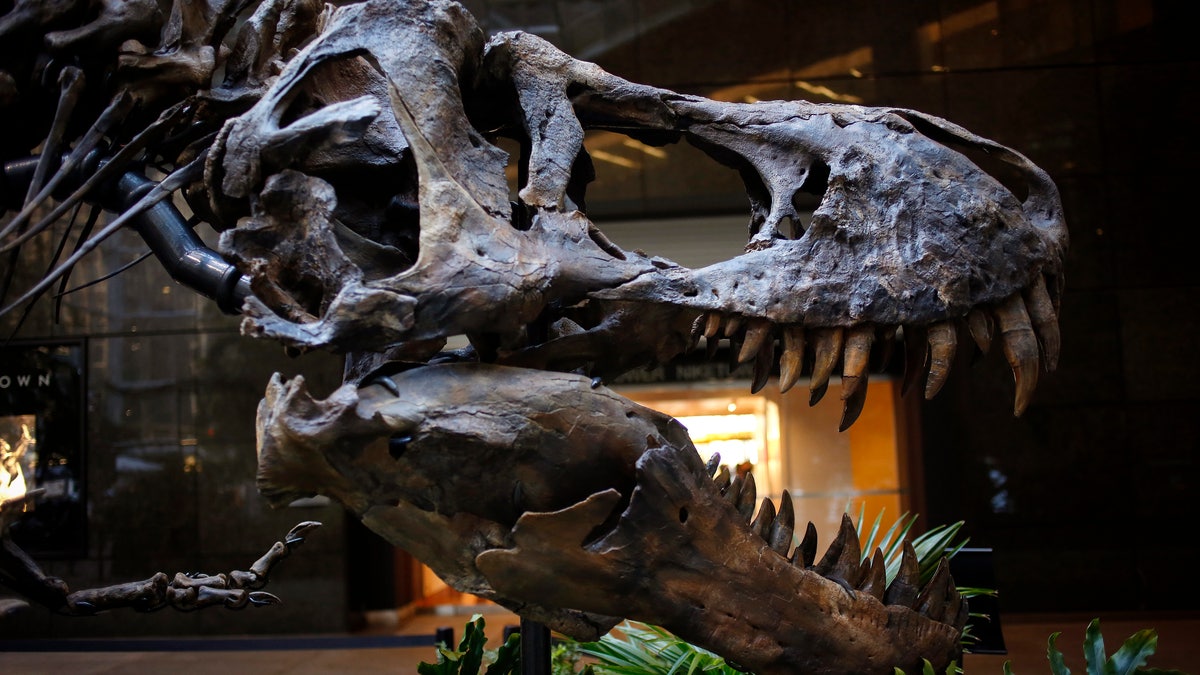
File photo. (REUTERS/Shannon Stapleton)
Researchers have discovered fragments of fossilized dinosaur eggs in Southern Japan, according to a June 29 report in the journal Cretaceous Research. The 90 eggshell fragments once housed five different types of dinosaurs, all of them small.
“We know from the eggshells that small dinosaurs were roaming Japan’s landscape in the Cretaceous,” Darla Zelenitsky, an assistant professor of paleontology at the University of Calgary and study co-author, told Foxnews.com. “Many of the bones known from Japan are from larger dinosaurs, but we now know (from the eggshells) that small dinosaurs were also an important part of the ecosystem.”
While dinosaur eggs have been discovered in hundreds of fossil sites elsewhere and just recently in nearby China, finding them in Japan is a rarity, where only 20 dinosaur fossil-yielding sites have been discovered in the past 37 years.
“There are not many rocks in Japan that are the right age to contain dinosaurs, plus much of the landscape is covered in vegetation so the rocks and the fossils they contain are usually hidden,” Zelenitsky explained.
Adding to dinosaur hunters’ woes is the fact that most rocks in the region are volcano-compressed, making them dense and need to be broken apart by hand.
Taking these factors into account, it makes the discovery of the egg fragments — which are tiny to begin with — all the more remarkable.
The rocky, 65 square-foot site where the eggs were discovered came to researchers’ attention in 2006, when an amateur fossil enthusiast led a team to the riverside location in Tamba City’s Kamitaki area. Slightly smaller than a tennis court, the site has since produced a multitude of fossils, not only from dinosaurs, but from prehistoric frogs and lizards as well.
Given the aforementioned volcano-compressed rocks and their small size, it would’ve been hard to distinguish bits of fossilized egg from the sediment. As it turns out, researchers combing the area were literally walking on eggshells — a lot of them.
“Only later when people from the museum looked more closely at the rocks from the site did they find tiny pieces of eggshell,” Zelenitsky recalled.
After separating the eggshells from the rock, researchers from the University of Calgary, the University of Hyogo, Museum of Nature and Human Activities, Hyogo, and Alberta's Royal Tyrrell Museum of Paleontology pored over the samples with a microscope to determine what kind of dinosaur eggs they’d found.
“If we look at the eggshells with a microscope, we can see the tiny structures that make up the eggshell,” Zelenitsky said. “These eggshell structures reveal the type of dinosaur or animal that laid the eggs.”
While some of the 110 million year–old eggs belonged to ancient birds, most of them belonged to small meat-eating dinosaurs called theropods, a group which counts T. rex as one of its luminaries. In fact, a few of the eggs discovered weighed in at between one and five ounces, making them some of the smallest theropod eggs found to date. On the other end of the spectrum, a few of the eggs belonged to ornithopods, which were large plant-eaters.
Researchers are hoping this find is just the tip of the iceberg and could lead to discovering the first preserved dinosaur nesting site on the islands.
